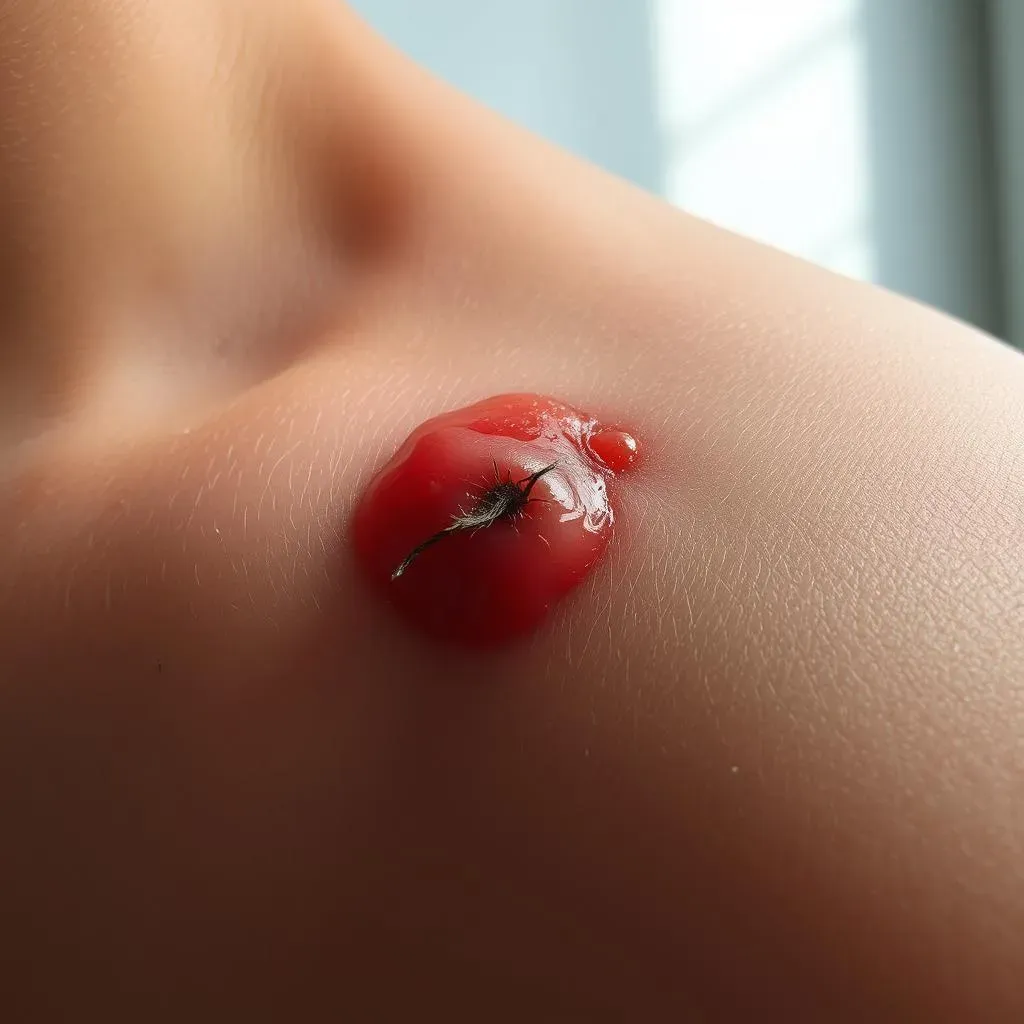Table of Contents
Are you tired of dealing with the discomfort and embarrassment of ingrown hairs? Do you struggle with recurrent ingrown hairs despite trying various hair removal methods? Look no further than laser hair removal, a revolutionary solution that has transformed the way we approach hair removal. Laser hair removal and ingrowns have a complex relationship, but the good news is that this treatment can significantly reduce the occurrence of ingrown hairs. By permanently destroying hair follicles, laser hair removal minimizes the risk of hairs growing back into the skin, making it an effective solution for those prone to ingrown hairs. In this article, we'll delve into the causes of ingrown hairs, explore how laser hair removal works to prevent them, and discuss the benefits and best practices for maintaining smooth skin after treatment. Whether you're seeking a long-term solution for ingrown hairs or simply want to achieve silky, smooth skin, this guide will walk you through everything you need to know about laser hair removal and ingrowns.
Understanding Ingrown Hairs: Causes and Symptoms

Understanding Ingrown Hairs: Causes and Symptoms
What are Ingrown Hairs?
Ingrown hairs occur when hair grows back into the skin, causing inflammation, redness, and discomfort. This happens when the hair follicle becomes curved or the hair is cut too closely to the skin, allowing the sharpened end to pierce the skin and grow back in. Ingrown hairs can appear anywhere on the body where hair is removed, but they are most common in areas with curly or coarse hair, such as the bikini line, underarms, and neck.
Ingrown hairs can lead to a range of symptoms, from mild irritation to severe infections. If left untreated, ingrown hairs can cause scarring, hyperpigmentation, and even folliculitis, a condition characterized by inflamed hair follicles. For individuals who struggle with recurrent ingrown hairs, the emotional toll can be significant, affecting self-confidence and overall well-being.
Causes of Ingrown Hairs | Symptoms | Complications |
|---|---|---|
Curly or coarse hair | Redness and inflammation | Folliculitis |
Improper shaving techniques | Pain and swelling | Scarring |
Tight clothing | Pus or discharge | Hyperpigmentation |
Risk Factors and Prevention
Certain individuals are more prone to ingrown hairs due to their hair type, skin tone, or lifestyle. For example, people with curly or coarse hair are more susceptible because their hair tends to curl back into the skin. Tight clothing can also increase the risk by causing friction and pushing the hair back into the skin. Additionally, improper shaving techniques, such as shaving too closely or using dull razors, can contribute to ingrown hairs.
- Avoid shaving too closely or using dull razors
- Exfoliate regularly to remove dead skin cells
- Use gentle cleansers and moisturizers to keep the skin hydrated
- Wear loose, comfortable clothing to reduce friction
While these preventive measures can help reduce the occurrence of ingrown hairs, they may not eliminate the problem entirely. For those who experience frequent ingrown hairs, laser hair removal offers a more permanent solution. By targeting the hair follicle and preventing regrowth, laser hair removal can significantly reduce the risk of ingrown hairs and provide long-term relief.
Laser Hair Removal and Ingrown Hairs: How it Works

Laser Hair Removal and Ingrown Hairs: How it Works
The Science Behind Laser Hair Removal
Laser hair removal works by targeting the hair follicle with a high-intensity light beam. The laser emits a wavelength of light that is absorbed by the pigment in the hair follicle, causing damage to the follicle and preventing future hair growth. This process is called photothermolysis. The laser is attracted to the melanin in the hair, so it's most effective for individuals with dark hair and light skin. However, advancements in laser technology have made it possible for people with darker skin tones to also benefit from the treatment.
The procedure typically requires multiple sessions, spaced several weeks apart, to achieve optimal results. Each session lasts anywhere from 15 minutes to an hour, depending on the area being treated. During the treatment, the laser is moved over the skin, emitting pulses of light that destroy the hair follicles. Some people may experience mild discomfort, similar to a rubber band snapping against the skin, but this can be managed with topical anesthetics or cooling devices.
Benefits of Laser Hair Removal | How it Helps with Ingrown Hairs | Results |
|---|---|---|
Permanent hair reduction | Destroys hair follicles to prevent regrowth | Smoother skin with reduced ingrown hairs |
Long-term solution | Minimizes the risk of ingrown hairs | Increased confidence and comfort |
How Laser Hair Removal Targets Ingrown Hairs
Ingrown hairs are often caused by curly or coarse hair that grows back into the skin. Laser hair removal is particularly effective for these hair types because it targets the follicle, preventing the hair from growing back. By reducing the number of hairs in the affected area, the likelihood of ingrown hairs decreases significantly. Additionally, laser hair removal can help reduce inflammation and prevent folliculitis, a condition that often accompanies ingrown hairs.
- Reduces hair growth: Fewer hairs mean less chance of ingrown hairs
- Minimizes inflammation: Prevents folliculitis and other complications
- Smoothes skin: Leaves skin feeling silky and looking even-toned
While laser hair removal is not a cure-all for ingrown hairs, it is a highly effective solution for preventing them. By understanding how the treatment works and what to expect, individuals can make informed decisions about their hair removal needs and take the first step towards smoother, healthier-looking skin.
Benefits of Laser Hair Removal for Ingrown Hair Prevention

Benefits of Laser Hair Removal for Ingrown Hair Prevention
Laser hair removal offers numerous benefits for individuals prone to ingrown hairs. By permanently reducing hair growth, this treatment minimizes the risk of hairs growing back into the skin. This, in turn, decreases the likelihood of inflammation, scarring, and hyperpigmentation associated with ingrown hairs. Laser hair removal is particularly effective for curly or coarse hair, which is more prone to ingrown hairs.
Benefits | How it Helps | Results |
|---|---|---|
Permanent Hair Reduction | Destroys hair follicles to prevent regrowth | Significant reduction in ingrown hairs |
Long-term Solution | Minimizes the risk of ingrown hairs | Smoother skin with reduced inflammation |
Reduced Risk of Folliculitis | Prevents inflammation of the hair follicles | Healthier-looking skin with minimal scarring |
In addition to these benefits, laser hair removal is a convenient and time-saving solution. Unlike waxing, threading, or sugaring, which require frequent upkeep, laser hair removal provides long-lasting results. This means less time spent on hair removal and more time enjoying smooth, healthy-looking skin. Furthermore, laser hair removal can be used on nearly any area of the body, making it a versatile solution for ingrown hair prevention.
- Convenient and time-saving
- Versatile for use on various body areas
- Long-lasting results with minimal upkeep
It's essential to note that laser hair removal is not a one-size-fits-all solution. Different skin types and hair colors require specialized laser settings to ensure safe and effective treatment. Consulting with a qualified practitioner is crucial to determine the best course of treatment for individual skin and hair types. By choosing the right laser technology and following post-treatment care instructions, individuals can maximize the benefits of laser hair removal and enjoy smoother, ingrown-hair-free skin.
Real-Life Examples of Laser Hair Removal Success
Many individuals have achieved significant reductions in ingrown hairs after undergoing laser hair removal. For example, a study on laser hair removal for bikini line ingrown hairs showed a substantial decrease in ingrown hairs and associated symptoms. Similarly, individuals with curly hair have reported smoother skin and reduced inflammation after treatment.
PostTreatment Care: Tips for Maintaining Smooth Skin

PostTreatment Care: Tips for Maintaining Smooth Skin
Immediate Post-Treatment Care
After undergoing laser hair removal, it's essential to follow proper post-treatment care to ensure the best results and minimize potential side effects. Immediately after the treatment, the skin may appear red and feel sensitive, similar to a mild sunburn. To soothe the skin, apply a cool compress or a topical cream recommended by your practitioner. Avoid direct sun exposure, and use a broad-spectrum sunscreen with at least SPF 30 to protect the treated area.
For the first 24-48 hours, avoid strenuous activities, such as exercise or heavy lifting, which can cause excessive sweating. Sweating can irritate the skin and increase the risk of complications. Additionally, avoid hot showers or baths, and instead opt for warm or cool water to clean the treated area gently. Pat the skin dry with a clean towel, rather than rubbing it vigorously.
Post-Treatment Tips | Benefits | Precautions |
|---|---|---|
Apply cool compresses | Soothes the skin | Avoid extreme temperatures |
Use gentle cleansers | Prevents irritation | Avoid harsh chemicals |
Moisturize regularly | Hydrates the skin | Avoid heavy or oily products |
Long-Term Skin Care
To maintain smooth skin and prevent ingrown hairs after laser hair removal, it's crucial to establish a consistent skincare routine. Exfoliate the treated area 1-2 times a week to remove dead skin cells and prevent clogged pores. Use a gentle exfoliant containing alpha-hydroxy acids (AHAs) or beta-hydroxy acids (BHAs), which help break down dead skin cells and promote cell turnover.
Keep the skin hydrated by applying a moisturizer suitable for your skin type. For sensitive skin, opt for fragrance-free and hypoallergenic products. In areas prone to ingrown hairs, consider using a moisturizer containing ingredients like urea or hyaluronic acid, which help lock in moisture and soothe the skin.
- Exfoliate 1-2 times a week
- Use gentle, fragrance-free cleansers
- Apply moisturizer regularly
- Avoid tight clothing to reduce friction
The Lasting Benefits of Laser Hair Removal for Ingrown Hairs
In conclusion, laser hair removal is a game-changer for individuals struggling with ingrown hairs. By targeting the root cause of ingrown hairs—hair regrowth—laser hair removal provides a permanent solution to this common problem. With its ability to reduce hair growth and minimize the risk of ingrown hairs, this treatment has become a preferred choice for those seeking smooth, healthy-looking skin. While it's essential to follow post-treatment care tips to maintain optimal results, the benefits of laser hair removal far outweigh the costs. If you're tired of dealing with the pain and discomfort of ingrown hairs, consider consulting a specialist at HairAwayByLaser.com to determine if laser hair removal is right for you. Say goodbye to ingrown hairs and hello to the smooth, confident you've always wanted.
